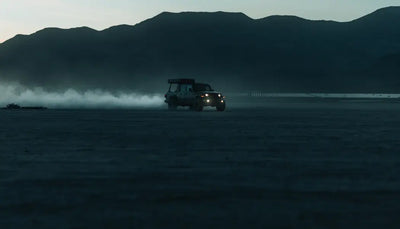Bird Dog Training Tips from Durrell Smith
Artist, outdoorsman, hunter, and bird dog trainer Durrell Smith wears many hats, having found multiple avenues to express his talents and achieve his aspirations. As the founder of the Minority Outdoor Alliance, as well as the creator & host of The Sporting Life Notebook podcast, he explores opportunities to bring an unlikely crowd into the outdoors.

Durrell first discovered his penchant for bird-dog handling and training following his first hunting season, which left him feeling like something was missing from his outdoor adventures. He found that missing link when a hunting mentor took him on a quail shoot with a Chesapeake Bay retriever. Durrell was captivated by watching the dog work, and the ease with which his mentor handled his sprightly companion. The experience took Durrell back to his youth, when he'd raised and trained his pet pit bulls. So, he researched and found a well-respected bird-dog trainer in southern Georgia—a local legend with more than one hundred years of passed-down bird-dog handling knowledge. Luckily, having just retired, he was willing to show Durrell the ins and outs of bird dog training and handling.
Over the next year, Durrell put in the time and hard work on the ground with his pointer, Vegas, to learn the art and develop his understanding of the bird dog/handler relationship. Today, Durrell shares his knowledge and skills with an expanding hunt community as one of the preeminent bird dog trainers in the region.

THE THREE COMMANDS
If you’re ready to begin your bird-dog handling adventure, start working with your pointer on these three basic commands:
Whoa: Bird dogs are off leash, free to run and roam, and often out of sight, so your voice and body language will get the dog to do the thing you want it to do. One of the most important handles for control and safety is “whoa,” which means “stop, don’t move.” In the field, you’ll need the dog to stop dead in their tracks from a full-on run. You don’t want the dog to scare off the birds or dart into a road where there might be moving vehicles. If a dog is on point, you don’t want them to creep on the birds, either. Durrell says he teaches a dog “whoa” even before he teaches the dog its name; it’s the foundational command.
Come: Once you get your bird dog to stop, you’ll also need the dog to return to you with a voice command; the dog needs a cue to come back. Dogs can’t understand what you’re saying, of course, but they do recognize vocal inflection. Durrell recommends using the word “come,” since it heavily emphasizes the “c” sound, as opposed to the “h” sound in “here.” The key is controlling your voice to handle the dog; you must be the alpha predator so the dogs respond appropriately to your commands.
Get Out: When it’s time for Durrell’s dogs to take off and hunt—to leave him and his horse behind and begin the search for the birds—Durrell says “get out” or “get up.” Bird dogs are ineffective when hanging off your heels; you need them out ahead, covering ground efficiently, and going to the right areas.
Durrell’s dogs sometimes stretch up to 500 yards away, and he’ll often lose sight of them. But with these simple commands, he can handle them with his voice through different terrain until he sees that perfect point: the tail sticking straight up at 12 o’clock and the dog’s head held high, frozen in position like a statue—a work of art.

Where Craft Meets Commitment
Bird-dog training is rooted in patience, discipline, and trust: the same principles that guide every moment spent outdoors. That partnership between handler and dog mirrors the relationship hunters form with the tools they rely on: dependable, precise, and built with purpose. Those values are reflected in Benchmade’s hunting knives, crafted for people who take pride in preparation and performance. As you continue sharpening your skills and deepening your connection in the field, let your gear reflect that same level of intention and dedication.


